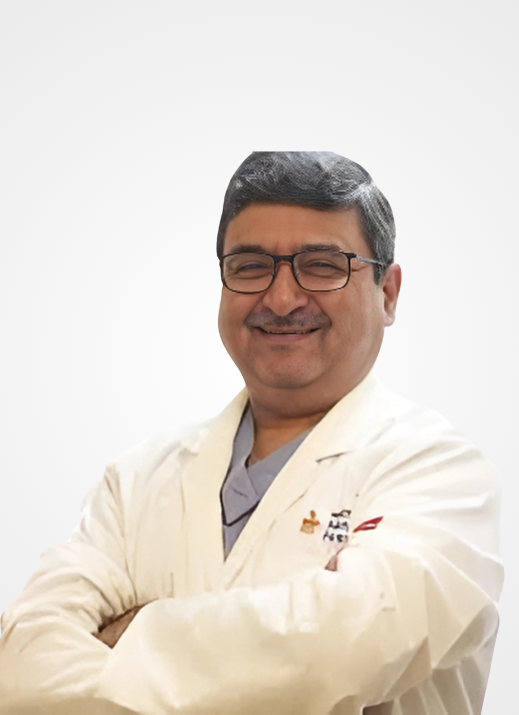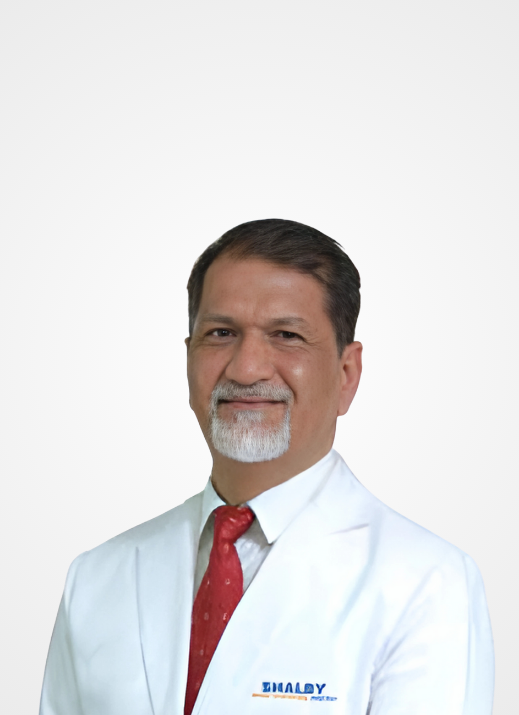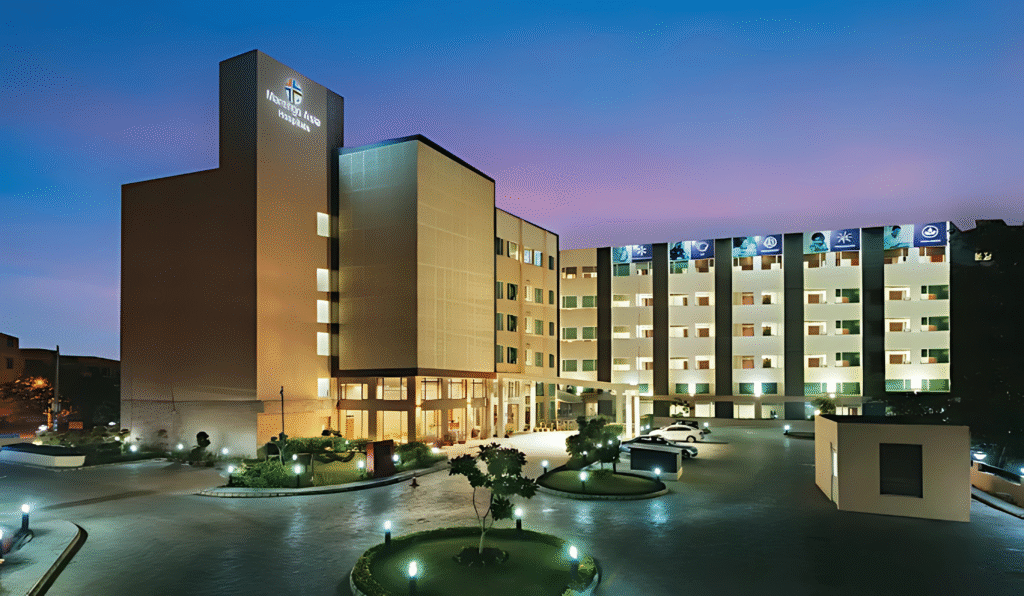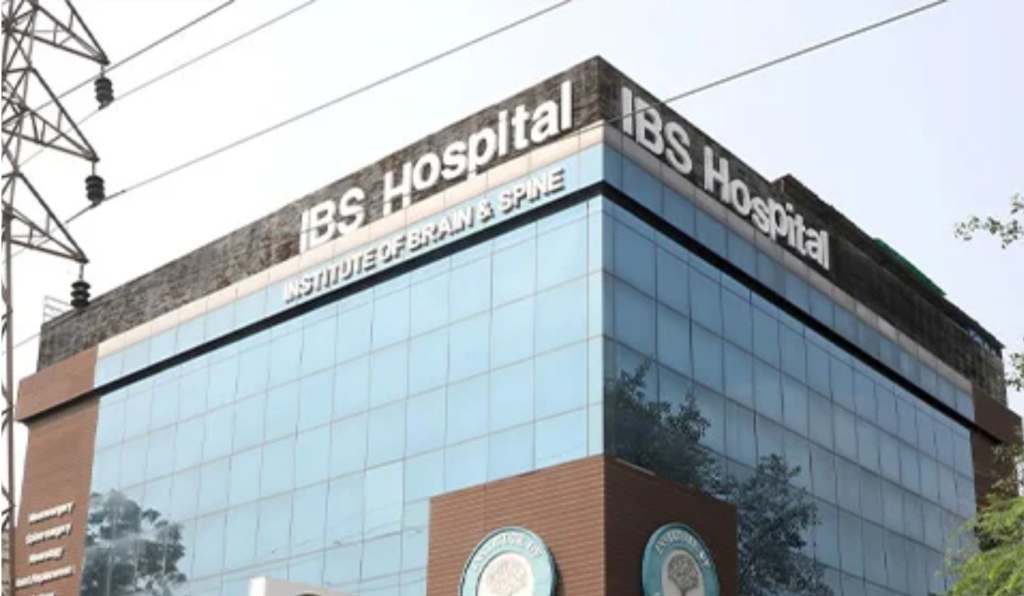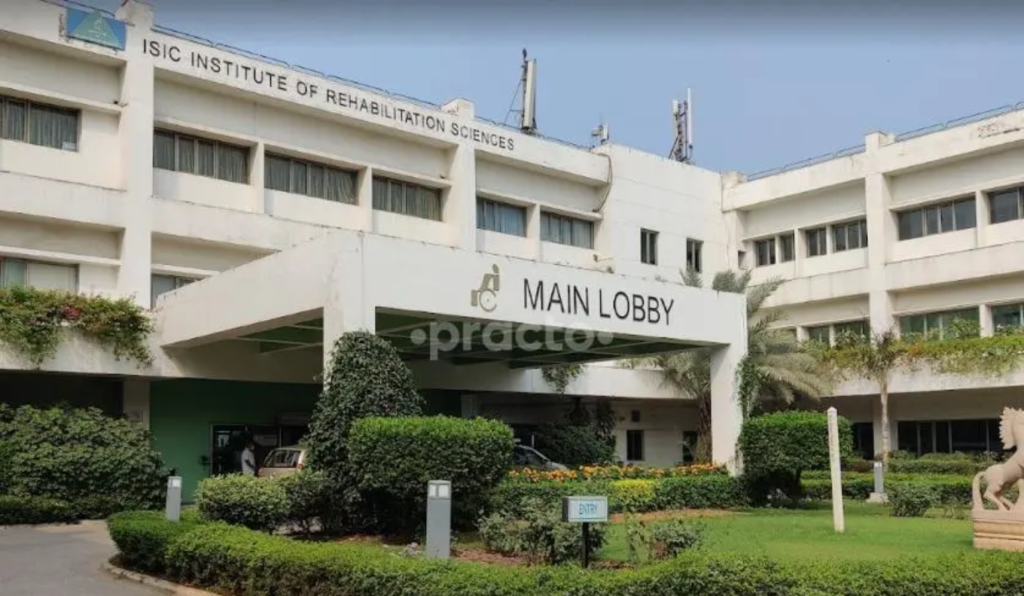Spinal Disorders Treatment Cost in India

What are Spinal Disorders?
Spinal disorders encompass a wide range of conditions affecting the vertebrae, spinal cord, intervertebral discs, and surrounding nerves. Common disorders include herniated discs, spinal stenosis, degenerative disc disease, and scoliosis. These issues can lead to chronic pain, reduced mobility, and even neurological deficits.
Merged ailments such as spondylolisthesis, where a vertebra slips out of place, and kyphosis or lordosis (abnormal curvatures of the spine), are also considered under spinal disorders. These conditions may result from aging, injury, or congenital abnormalities and often require a multidisciplinary approach to treatment.
How Do Spinal Disorders Develop?
Spinal disorders develop through a combination of degenerative changes, structural abnormalities, trauma, and chronic stress on the spine. Conditions such as herniated discs, spinal stenosis, and degenerative disc disease typically arise from age-related wear and tear. Repeated strain, poor posture, and obesity also contribute to spine degeneration.
Genetic predisposition or congenital abnormalities like spina bifida may cause early-onset spinal issues. Over time, the cushioning discs between vertebrae lose hydration and elasticity, making them more susceptible to herniation or collapse. This leads to nerve compression, pain, numbness, and weakness. In severe cases, spinal instability can result in deformities or neurological deficits requiring surgical correction.
Causes and Risk Factors of Spinal Disorders
Spinal disorders encompass a wide range of conditions affecting the bones, discs, nerves, and muscles of the spine. These can lead to chronic pain, reduced mobility, and nerve compression, significantly impacting daily function. The causes of spinal disorders vary depending on the condition, but they often arise from structural degeneration, injuries, or congenital issues.
Primary Causes of Spinal Disorders
- Degenerative Changes: Aging causes wear and tear of spinal discs and joints, leading to conditions like herniated discs, spinal stenosis, and osteoarthritis of the spine.
- Injuries or Trauma: Falls, sports injuries, or accidents can result in fractures, slipped discs, or vertebral misalignment.
- Congenital Conditions: Some individuals are born with spinal deformities such as scoliosis or spina bifida, which may worsen over time.
- Inflammatory Disorders: Diseases like ankylosing spondylitis cause inflammation of spinal joints, leading to stiffness and fusion of vertebrae.
Risk Factors Contributing to Spinal Disorders
- Age and Wear: Most spinal issues, such as disc degeneration and spondylosis, develop or worsen with age.
- Poor Posture and Body Mechanics: Prolonged sitting, improper lifting techniques, and lack of core support increase spinal stress.
- Occupational Hazards: Jobs requiring repetitive bending, heavy lifting, or long periods of standing or sitting can strain the spine.
- Obesity: Excess weight adds pressure on the spine and contributes to disc degeneration and lower back pain.
- Sedentary Lifestyle: Inactivity weakens muscles supporting the spine, increasing susceptibility to injury and pain.
- Genetic Predisposition: Some spinal deformities and disc conditions may run in families, increasing an individual’s risk.
Spinal disorders vary greatly in severity, and early identification of risk factors can help in prevention, better management, and long-term spinal health.
Symptoms of Spinal Disorders
Spinal disorders cover a wide range of conditions affecting the vertebrae, intervertebral discs, spinal cord, and surrounding nerves. The symptoms vary based on the location and severity of the condition but generally impact mobility, nerve function, and overall posture.
Chronic or Acute Back and Neck Pain
Pain is one of the most common and early indicators of spinal issues.
- Localized pain in the neck, mid-back, or lower back.
- Radiating pain that travels to the shoulders, arms, hips, or legs.
- Increased discomfort with movement, bending, or prolonged standing/sitting.
Nerve-Related Symptoms
When spinal nerves are compressed or irritated, neurological symptoms can appear.
- Numbness, tingling, or weakness in the limbs or extremities.
- Shooting pain down the legs (sciatica) or arms.
- Loss of coordination or balance in more advanced cases.
Mobility and Postural Issues
Severe or progressive spinal disorders can affect physical movement and alignment.
- Stiffness and restricted range of motion in the spine.
- Abnormal spine curvature, such as in scoliosis or kyphosis.
- Muscle spasms or tightness, especially in the lower back.
Types of Spinal Disorders
Spinal disorders affect the structure or function of the spine, causing pain, limited movement, or neurological issues. These disorders may involve the vertebrae, discs, nerves, or spinal cord. Identifying the type of spinal issue is essential for choosing the right surgical or non-surgical treatment.
Occurs when the soft center of a spinal disc pushes through a crack in the tougher exterior casing, pressing on nearby nerves. This can cause pain, numbness, or weakness in the limbs. It’s most common in the lower back and neck, and may require surgery in severe cases.
Refers to the narrowing of the spinal canal that puts pressure on the spinal cord and nerves. This condition typically affects older adults and causes symptoms like back pain, leg cramps, and numbness. Treatment may include physical therapy or surgical decompression.
A sideways curvature of the spine, usually developing in childhood or adolescence. Depending on the degree of curvature, it can be mild or severe, potentially impacting breathing or organ function. Bracing or spinal fusion surgery may be required in progressive cases.
Ankylosing Spondylitis
Kyphosis
Spondylolisthesis
Which Type of Spinal Disorder is the Most Dangerous?
Spinal Cord Injuries (SCI) are the most dangerous type of spinal disorder. These injuries can result in permanent damage to the spinal cord, leading to partial or complete paralysis, loss of sensation, and dysfunction of vital organs. Depending on the severity and location of the injury, spinal cord damage can severely impact mobility, independence, and quality of life, often requiring long-term rehabilitation and support.
Why Choose India for Orthopaedic Treatment?
India has emerged as a global hub for advanced orthopaedic care, attracting thousands of international patients each year. With a unique blend of medical excellence, cutting-edge technology, and cost-effective treatment, India offers unmatched advantages for those seeking relief from joint disorders, spinal conditions, fractures, nerve compression syndromes, and more. Whether it’s a complex surgical intervention or conservative therapy, patients receive world-class care tailored to their individual needs. Here’s why India stands out as a preferred destination for orthopaedic treatments.
India is home to some of the most experienced and internationally trained orthopaedic specialists. Many surgeons have trained in top global institutions and bring extensive expertise in managing complex cases—ranging from osteoarthritis and fractures to congenital and developmental bone disorders.
Indian hospitals offer state-of-the-art facilities equipped with cutting-edge imaging, robotic surgery, arthroscopy units, and minimally invasive surgical technologies. Dedicated orthopaedic departments ensure focused treatment for ailments like spinal disorders, ligament tears, and bone density issues.
India offers world-class orthopaedic care at a fraction of the cost compared to Western countries. Treatment plans—including surgery, rehabilitation, physiotherapy, and follow-ups—are bundled into affordable, transparent packages, making high-quality care accessible to international patients.
Unlike many countries where patients face long waiting periods for orthopaedic procedures, India ensures prompt consultations, diagnostics, and surgeries. This significantly reduces disease progression and enhances recovery outcomes.
India is a global leader in medical tourism, offering:
✔ Dedicated international patient coordinators
✔ Medical visa assistance for easy travel
✔ Affordable accommodation & travel support
✔ Multilingual staff, including English-speaking doctors
This ensures a smooth and hassle-free experience for foreign patients traveling to India for treatment.
Indian hospitals emphasize treatment and post-operative rehabilitation. Personalised physical therapy plans, nutritional counseling, and long-term follow-up care help restore mobility and improve overall quality of life after treatment.
Different Types of Treatments for Spinal Disorders
Treating spinal disorders requires a personalized approach depending on the underlying condition—such as herniated discs, spinal stenosis, or degenerative disc disease. Conservative treatments are often the first line of care, focusing on pain reduction, improved mobility, and prevention of further injury. These treatments help manage symptoms effectively and can delay or prevent the need for surgical intervention.
How It Works: Pain management involves the use of medications and non-invasive therapies to alleviate chronic or acute spinal pain. This can include NSAIDs, muscle relaxants, and neuropathic pain relievers. These medications help reduce inflammation, block pain signals, or relax tightened muscles.
Reduces nerve-related and muscular pain
Improves mobility by controlling inflammation
Often used alongside physical therapies for better results
When It’s Used: Pain management is typically used in early or moderate stages of spinal disorders like lumbar spondylosis, sciatica, or spinal disc degeneration.
Ideal for chronic back or neck pain
Used before or after surgery
Recommended when inflammation or nerve pain is present
Benefits:
Non-invasive and readily available
Helps patients maintain a functional lifestyle
Supports recovery and rehabilitation
How It Works: Epidural steroid injections involve administering corticosteroids directly into the epidural space around the spinal cord to reduce inflammation and pressure on nerves. The effect is localized and provides rapid pain relief.
Delivers steroids directly to the inflammation site
Reduces swelling around compressed nerves
Provides temporary but significant relief
When It’s Used: Commonly used for patients with herniated discs, spinal stenosis, or sciatica.
When pain radiates to legs or arms (radiculopathy)
As a bridge to surgery or physical therapy
For acute flare-ups in chronic cases
Benefits:
Fast-acting pain relief
Minimally invasive outpatient procedure
Helps improve participation in physiotherapy
How It Works: Physiotherapy uses structured exercises, manual therapy, and modalities like heat, ultrasound, or TENS to relieve spinal pain and strengthen supporting muscles. The goal is to improve flexibility and posture.
Tailored exercises reduce spinal stress
Strengthens core and back muscles
Enhances spinal alignment and motion
When It’s Used: Ideal in both acute and chronic stages of spinal disorders like scoliosis, degenerative disc disease, and vertebral fractures.
Early-stage management or post-operative recovery
When mobility and strength are affected
Used as long-term maintenance therapy
Benefits:
Prevents recurrence or worsening of symptoms
Non-invasive and improves functional ability
Personalized and progressive
How It Works: Chiropractic therapy focuses on spinal manipulation and manual adjustments to realign the spine, relieve pressure on nerves, and improve posture and range of motion.
Corrects misalignments in spinal vertebrae
Enhances nervous system function
Reduces mechanical strain on spinal discs
When It’s Used: Primarily used in mechanical spinal disorders like facet joint dysfunction, scoliosis, or minor vertebral subluxations.
When imaging shows alignment issues
For patients preferring drug-free care
When conventional therapy alone is insufficient
Benefits:
Drug-free and non-surgical
Can provide instant relief in mild cases
Enhances overall spine health
Different Procedures for Spinal Disorders
When conservative treatments like medications or physiotherapy do not offer sufficient relief, surgical procedures are considered to address the structural issues in the spine. These procedures aim to stabilize the spine, relieve pressure on nerves, and correct deformities. With advancements in technology, many spinal procedures are now minimally invasive and robot-assisted, resulting in faster recovery and better precision.
How It Works:
Spinal fusion involves joining two or more vertebrae using bone grafts, screws, and rods to eliminate movement between them. This stabilizes the spine and reduces pain caused by vertebral motion or instability.
Bone grafts encourage permanent fusion
Screws and rods maintain alignment
Reduces pressure on nerves and spinal discs
When It’s Used:
Commonly used for degenerative disc disease, spinal fractures, scoliosis, and severe spinal instability.
When vertebrae are slipping or damaged
In advanced arthritis of the spine
As part of scoliosis correction surgeries
Benefits:
Increases spinal stability
Prevents further degeneration
Long-term relief from pain and nerve compression
How It Works:
Laminectomy involves removing the lamina (part of the vertebral arch) to relieve pressure on the spinal cord or nerves. This procedure creates more space within the spinal canal.
Removes part of the bone over the spinal canal
Relieves nerve root compression
Often combined with spinal fusion if instability exists
When It’s Used:
Typically used in spinal stenosis or disc herniation where nerve compression leads to severe pain or neurological symptoms.
When pain radiates down the arms or legs
If conservative treatments fail
In cases with progressive weakness or numbness
Benefits:
Provides quick relief from nerve compression
Restores mobility and reduces pain
Can prevent further neurological deterioration
How It Works:
A discectomy removes the herniated portion of a spinal disc that is pressing on nearby nerves. It may involve a small incision or be done via minimally invasive techniques.
Removes disc material irritating the nerve root
Preserves surrounding spinal structures
Can be performed with microscope assistance
When It’s Used:
Common for lumbar or cervical disc herniation causing severe leg or arm pain, weakness, or numbness.
When disc bulges or ruptures
If nerve pain persists after rest and medications
In cases with sciatica or radiculopathy
Benefits:
Immediate pain relief
Minimally invasive with quick recovery
Reduces need for long-term medications
How It Works:
MISS uses small incisions and advanced tools like tubular retractors, endoscopes, or navigation systems to perform spinal surgeries with less tissue damage.
Targets specific problem areas
Preserves surrounding muscles and ligaments
Uses real-time imaging for precision
When It’s Used:
MISS can be applied to various spinal conditions like herniated discs, spinal tumors, or infections.
For patients with multiple co-morbidities
When faster recovery is desired
When traditional open surgery is risky
Benefits:
Reduced blood loss and post-op pain
Shorter hospital stays
Faster rehabilitation and return to daily activities
How It Works:
Robotic-assisted surgeries use robotic arms and computer-guided navigation to enhance precision during spinal procedures. The surgeon operates through a console with real-time visuals.
Creates detailed 3D images of the spine
Ensures accurate implant placement
Minimizes surgical errors
When It’s Used:
Used in complex spinal fusions, deformity corrections, and procedures requiring precise hardware placement.
For scoliosis or revision surgeries
When accuracy is critical near spinal cord or nerves
In minimally invasive or reconstructive surgeries
Benefits:
Increased surgical accuracy
Reduced risk of complications
Enhanced safety in high-risk cases
Other Advanced Procedures and Costs
As spinal surgery continues to evolve, several advanced procedures have emerged to manage complex spine conditions more effectively. These procedures go beyond conventional methods, offering enhanced accuracy, faster recovery, and preservation of spinal mobility. They’re particularly useful for patients with degenerative disorders, deformities, or who have not responded to standard treatments.
How It Works:
Instead of fusing vertebrae, this procedure replaces a damaged spinal disc with an artificial one to maintain motion in the spine.
Disc prosthesis mimics natural movement
Implanted between vertebrae to maintain spacing
Avoids the stiffness of spinal fusion
When It’s Used:
Recommended for patients with degenerative disc disease who still retain spinal stability but suffer from chronic disc-related pain.
As an alternative to fusion in the lumbar or cervical spine
For patients seeking to maintain mobility
When only one or two levels are affected
Benefits:
Preserves natural spine movement
Quicker return to normal activities
Reduces strain on adjacent spinal segments
How It Works:
These minimally invasive procedures stabilize spinal fractures caused by osteoporosis or trauma by injecting bone cement into the vertebrae.
Vertebroplasty: Cement is injected to stabilize the fracture
Kyphoplasty: A balloon is first inserted to create space, then filled with cement
Prevents further collapse of the vertebrae
When It’s Used:
Used for compression fractures in osteoporotic bones or vertebral tumors.
In elderly or osteoporotic patients
After sudden back pain from vertebral compression
To prevent deformity and height loss
Benefits:
Immediate pain relief
Restores spinal height (kyphoplasty)
Quick outpatient recovery
How It Works:
These are special implants used during spinal fusion that can be expanded after placement to restore disc height and optimize spinal alignment.
Inserted through small incisions
Expanded inside the spine for customized support
Encourages fusion between vertebrae
When It’s Used:
Ideal for patients needing spinal decompression and stabilization with minimal invasiveness.
In lumbar degenerative disc disease
For correcting mild spinal deformities
Where disc collapse affects nerve roots
Benefits:
Custom fit and alignment
Reduced nerve compression
Improved fusion success rates
Best Doctors for Spinal Disorders Treatment in India
Best Hospitals for Spinal Disorders Treatment in India
Med Travel India Offerings
How does Med Travel India help you?
Med Travel India is dedicated to assisting international patients in accessing high-quality Orthopaedic treatment in India. We ensure a seamless medical journey from selecting the best hospitals to providing logistical support. Our team works closely with top doctors and healthcare facilities to offer personalised treatment plans tailored to each patient’s condition.
We take care of every aspect of medical travel, allowing patients to focus solely on their recovery. Below is a list of services provided by our company:
Services offered by Med Travel India

Seamless Planning for Your Medical Journey
Before you even arrive, we take care of all the groundwork. From connecting you with top specialists to ensuring all necessary medical evaluations are completed, we make your journey stress-free. Our goal is to provide clarity and comfort before your treatment begins.
- Free Medical Consultation
- Personalized Treatment Plan
- Estimated Cost & Duration
- Visa Assistanc
- Second Opinion Service
- Pre-Arrival Coordination
Worry-Free Travel & Comfortable Stay
We ensure that your journey to India is as smooth as possible. From booking your flights to arranging a comfortable stay near your hospital, we handle everything so you can focus on your health.
- Flight Booking Assistance
- Accommodation Booking
- Airport Pickup & Drop
- Language Interpretation Services
- Local Transport Arrangements
- Currency Exchange Support


World-Class Medical Care, Personalized for You
We ensure that your medical treatment is well-organized and efficient. Our team works closely with hospitals to facilitate smooth admissions, consultations, and procedures, ensuring you receive top-quality healthcare.
- Priority Appointment Scheduling
- Direct Hospital Admission
- Specialist Doctor Assignment
- Pharmacy & Medical Supplies
- Hospital Admission & Discharge Support
- 24/7 Customer Assistance
Continued Support for a Speedy Recovery
Your health journey doesn’t end after treatment. We provide post-procedure assistance to ensure a smooth recovery, whether you stay in India for rehabilitation or return home.
- Post-Surgical Care Coordination
- Rehabilitation & Physiotherapy
- Virtual Doctor Consultations
- Diet & Lifestyle Guidance
- Extended Stay Arrangements
- Post-treatment Medical Supplies


Beyond Healthcare, A Comfortable Experience
We offer additional services to make your stay in India comfortable and enriching, ensuring that your well-being is cared for beyond the hospital.
- Medical Insurance Settlement Help
- SIm Card Assistance
- Customized Sightseeing Tours
- Medical Document Assistance
- Personalized Assistance for Family Members
- Concierge Services
Reviews From Our Patient




